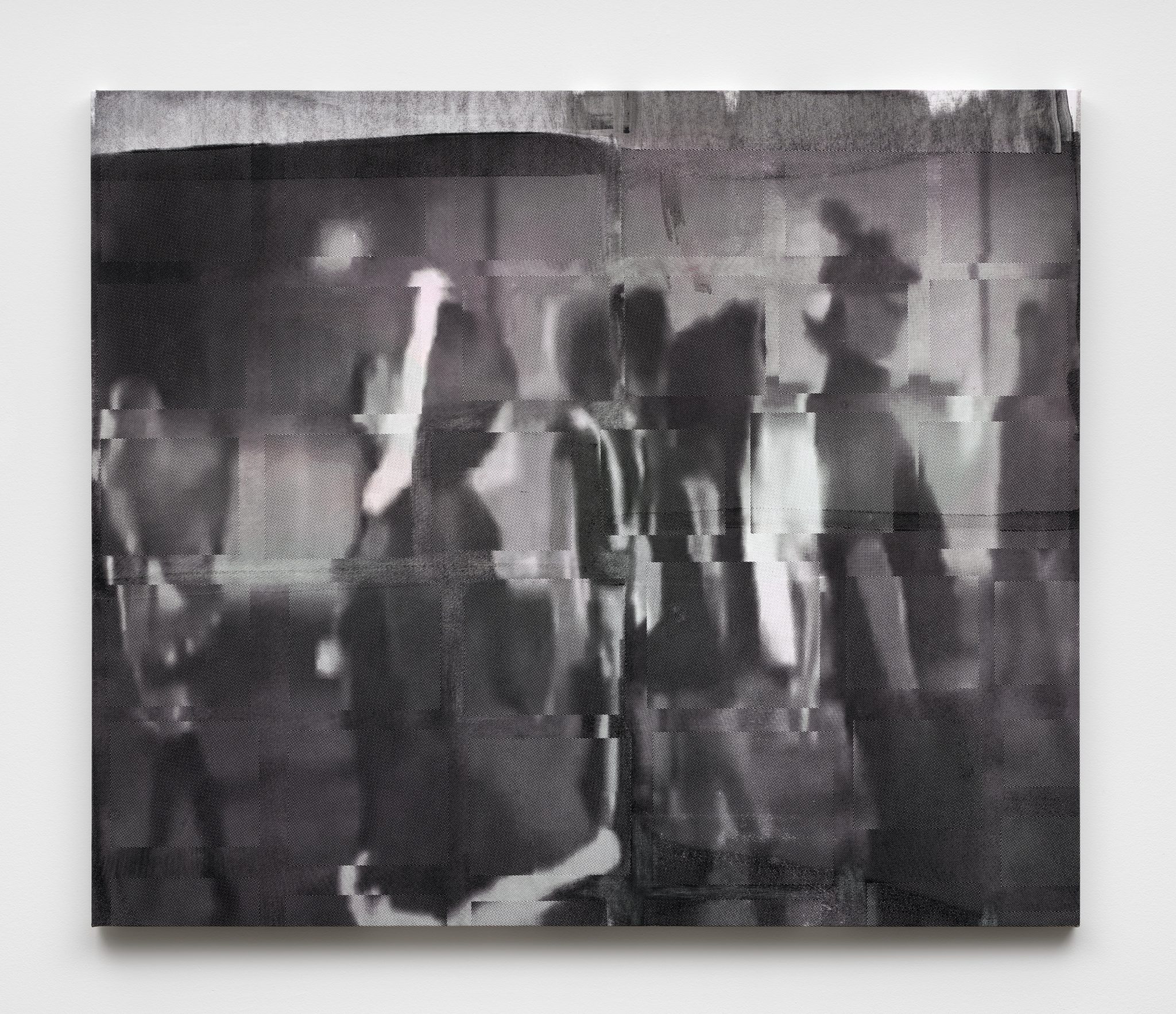Never Odd or Even at Hannah Hoffman, Los Angeles stages topsy-turvy, deceptive encounters with visual culture
Palindromes are ancient games, riddles in which words and phrases read the same backward as forward. Kate Mosher Hall’s paintings (and their titles, which, including the name of her exhibition, are occasionally palindromic) encourage a similarly unorthodox dexterity, suggesting that viewers see the forms of contemporary media in new, unexpected ways. Accretions of silk-screen, acrylic paint, charcoal and flashe compose Mosher Hall’s paintings. Her layered works stage topsy-turvy encounters with visual culture, masking nostalgic imagery sourced from home movies or photo archives with techniques that emphasise the nature of their digital and analogue reproduction. Up close, these charged surfaces dissolve into grids, pixels or moiré patterns, their fragments disrupting emotional attachments to consumer media.
In Mosher Hall’s work, the reproduction of images belies their original content. Squeeze wax (all works 2024) features three silkscreened film stills placed inside overlapping rectangles set in a larger, darker backdrop. Their grainy footage vaguely depicts a domestic scene – a figure stands above a sink or table, the camera’s angle lopsided – with the lo-fi quality of a degraded 1990s home video. The cropping of Mosher Hall’s silkscreened elements further hinders the visibility of the hazy camcorder excerpts. From afar, the similarly sentimental scene in 31,556,952 seconds is only just decipherable: a single birthday candle flares, perhaps held up by a parent’s hand. The snapshot, though, appears in a seemingly infinite series of sequentially smaller squares, its content increasingly unrecognisable. These repetitive, screenprinted compositions are difficult to discern, implying and obstructing emotional relationships to source material.
Mosher Hall’s techniques seem to allegorise the way the mass distribution of media can supersede sentiment – or even comprehension. In Clothing as a spell, pixelated squares cloak a street scene’s details, shadowy silhouettes fragmented by the overlaid motif. Its patterning evokes the design of social media, a ‘grid’ that partially conceals the people pictured beyond. Hit silver displays similar faded grey squares over a black background. White figurative outlines and faint sun-flares peek out from below, suggesting the landscape that may have been visible prior to the grid’s application. Mosher Hall’s paintings reverse a structure common to online media outlets: their templates do not usher images into view – instead, they hide them from sight, recreating images only to make them incoherent.
Palindromes simultaneously emphasise language’s forms while encouraging disregard for them. Readers must leap over capital letters, spaces and punctuation, ignoring typical structures in order to produce a phrase’s mirrored meaning – if there is one. It’s worth remembering that what ‘Never Odd or Even’ describes might not actually exist; all real integers are either odd or even, though Mosher Hall’s work beckons more expansive – and unreal – interpretations. Her works pose similar conundrums, subordinating recognisable subject matter to the technology that reproduces it. What emerges is haunting and irreverent: Mosher Hall dips into media’s pathos but paints only its pixels. The resulting artworks defy conventional logic, their apparitions slipping from comprehension as easily as they arrive.
Never Odd or Even at Hannah Hoffman, Los Angeles, 17 February – 23 March
